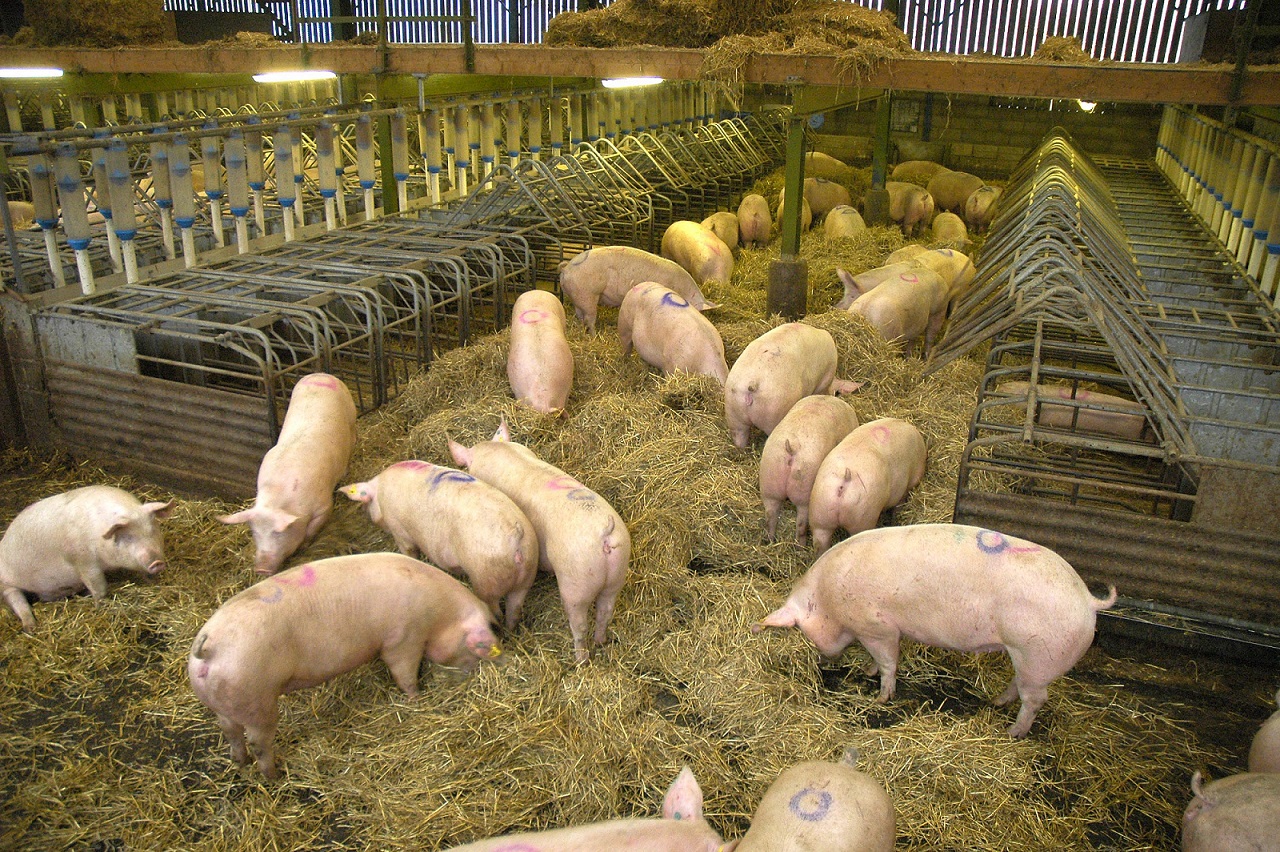Trial saves pig industry an estimated £15.3m
Monday, 19 July 2021
Our accelerated ammonia monitoring trial shows that the British pig industry is successfully reducing ammonia emissions, saving producers an estimated £15.3m.
The results, which have been welcomed by the Environment Agency (EA), finally enable the industry to firmly demonstrate compliance and best practice, saving them from environmental mitigation costs.
Pig producers must meet the Best Available Technique (BAT) Associated Emission Levels (AELs). If they cannot prove they are doing so, they must pay mitigation costs. The trial provides that proof and allows for updates in regulating the sector through accurate annual pollution inventory reporting and future habitat risk assessments.
The trial has provided a comprehensive and valuable study of ammonia emissions from different pig production systems, improved the industry’s understanding of emissions from the pork sector and demonstrated the reduction in emissions.

The EA has used the results, along with previous monitoring trials and older National Atmospheric Emissions Inventory (NAEI) data, to inform draft emission factors which will be published later this year. Importantly, these new emission factors demonstrate that UK pig housing is fully compliant with the BAT AELs and shows a decrease in the quantity of ammonia emitted from English commercial pig housing.
Zanita Markham, AHDB Knowledge Transfer Manager, said: “We are delighted to be able to present the most comprehensive and recent study of its kind. It demonstrates compliance on all housing types, which is to the industry’s credit. Importantly, it also sets a benchmark against which we can measure further reductions in emissions in the future.”
The aim of this trial was to establish eight new ammonia emission factors for a specific and representative range of pig housing types. The results not only provide these, but also demonstrate that farmers have decreased ammonia emissions since the historic data was first published.
Until this trial, the EA used emission factors based on NAEI data. However, not all these figures met the BAT AELs for pig housing. Natural England also uses the emission factors as part of planning applications. The report and findings are available for Defra to use for annual reporting for international air quality obligations.
A spokesperson from the EA said: “We are really pleased to have worked with AHDB to provide evidence that will continue to support permitting decisions for the industry for many years to come."
Highlighting the benefits of stakeholder collaboration, Harley Stoddart, AHDB Senior Environment Scientist, commented: “Through working with an excellent contractor and group of producers, as well as the Environment Agency and Defra, this project has demonstrated the benefits of collaboration by providing robust evidence of ammonia emissions from a wide range of modern pig production systems.”
Miss Markham added: “We would like to extend our gratitude to all the farmers who participated in this study.”
More details about the results and implications can be found at ahdb.org.uk/knowledge-library/environmental-permitting-regulations. Producers with questions can get in touch with Zanita Markham: zanita.markham@ahdb.org.uk
New Best Available Techniques reporting requirements
The Best Available Techniques (BAT) Conclusions for the intensive rearing of pigs and poultry document was published on 21 February 2017. This document details the technical standards all permitted pig and poultry farms must follow to protect the environment. Farms should have been compliant with these standards by 21 February 2021. Most permitted farms will already follow these techniques, but there are some new measures.
BAT Associated Emission Levels (AELs) provide a performance benchmark to determine whether an activity is classed as a BAT. There are new BAT AELs for ammonia emissions from animal houses and BAT Associated Levels for total nitrogen and phosphorus excretion. Pig permits include a table with the BAT AELs for all pig types. For the new nutritional levels, operators must report on the nitrogen and phosphorus excreted in livestock manure and slurry, either using a mass balance calculation or from analysis.
Operators are already required to report emissions to air through the Pollution Inventory, and this will continue. It is now also a BAT conclusion requirement to report emissions of dust and ammonia. It is anticipated that operators will use emission factors to report these, but there is an option to carry out monitoring.
Operators will need to report these figures to the EA annually, starting from January 2022, using data from 2021. The EA will compare the figures to the BAT AELs specified in the permit.
Operators will need to update their Environmental Management System (EMS) to include an environmental policy statement. This should outline the commitment to the EMS and the continuous improvement of the environmental performance of the farm. Operators are already required to have an EMS, which comprises a variety of procedures, for example, accident management, maintenance, staff training, odour and noise management. Operators may need to update the EMS procedures in line with changes to legislation, permit requirements or to meet the expectations of interested parties.
AHDB Pork have produced a template environmental policy statement, or you can obtain a copy of the ISO14001 EMS standard from here to help with this.
Operators were required to cover slurry stores by 21 February 2021 to prevent ammonia emissions to the air. The EA published a Regulatory Position Statement to offer some operators an 18-month extension. This only applies to operators who previously depended on the <1% dry matter position to justify not covering their slurry stores. This position was removed following a scientific review that found no evidence that dry matter relates to ammonia emission potential.
The EA will publish updated guidance on meeting these techniques and reporting the new figures in the summer (2021).
Useful links
Environmental Permitting Regulations
Model Template B3.5 3C: Environmental Policy Statement
ISO 14001:2015 Environmental management systems — Requirements with guidance for use
EA statement regarding slurry stores on permitted pig and poultry farms with less than 1% dry matter
Establishing ammonia emission factors for shallow pit, fully-slatted finisher buildings
Establishing ammonia emission factors for straw-based buildings


